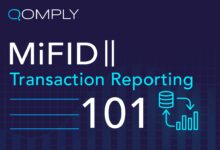Blockchain-Based Trade Settlement System for Institutional Investors Reducing Counterparty Risk: 7 Revolutionary Benefits
Institutional investors face growing challenges in trade settlement—delays, inefficiencies, and high counterparty risk. Enter blockchain-based trade settlement systems: a transformative solution promising speed, transparency, and security like never before.
1. Understanding the Core of Blockchain-Based Trade Settlement Systems

The financial world is undergoing a seismic shift. Traditional trade settlement processes, which can take days and involve multiple intermediaries, are being challenged by a new paradigm: the blockchain-based trade settlement system for institutional investors reducing counterparty risk. This innovation leverages distributed ledger technology (DLT) to streamline post-trade operations, ensuring faster, more secure, and transparent transactions.
What Is a Blockchain-Based Trade Settlement System?
At its core, a blockchain-based trade settlement system is a decentralized digital ledger that records transactions across a network of computers. Unlike traditional systems that rely on central clearinghouses, this model allows for peer-to-peer settlement without intermediaries. Each transaction is cryptographically secured, time-stamped, and immutable.
- Transactions are recorded in real-time across a distributed network.
- Data cannot be altered retroactively, ensuring integrity.
- Smart contracts automate execution based on predefined conditions.
This architecture is particularly beneficial for institutional investors—banks, asset managers, pension funds—who require high-volume, low-latency settlement with minimal operational friction.
How It Reduces Counterparty Risk
Counterparty risk—the danger that one party in a financial transaction will default before fulfilling their obligation—is a major concern in traditional markets. In a blockchain-based trade settlement system for institutional investors reducing counterparty risk, this threat is significantly mitigated through instant finality and atomic settlement.
Atomic settlement means that the exchange of assets and payment occurs simultaneously. If one side fails, the entire transaction is voided. This eliminates the window of exposure that exists in T+2 or T+1 settlement cycles.
“With blockchain, settlement isn’t just faster—it’s safer. The risk of one party receiving assets while the other doesn’t get paid evaporates.” — David E. R. Morrison, Financial Innovation Analyst
2. The Evolution of Trade Settlement: From T+2 to Real-Time Settlement
To appreciate the impact of a blockchain-based trade settlement system for institutional investors reducing counterparty risk, it’s essential to understand the historical context of trade settlement. For decades, financial markets have operated on a T+2 (trade date plus two days) model, where securities are delivered and payment is made two business days after a trade.
blockchain-based trade settlement system for institutional investors reducing counterparty risk – Blockchain-based trade settlement system for institutional investors reducing counterparty risk menjadi aspek penting yang dibahas di sini.
The Limitations of Traditional Settlement Cycles
The T+2 model, while standardized, introduces several inefficiencies:
- Operational Delays: Manual reconciliation, time zone differences, and intermediary handoffs slow down the process.
- Capital Inefficiency: Funds and securities are locked up for days, reducing liquidity.
- Increased Risk Exposure: The gap between trade execution and settlement creates counterparty risk.
These issues are magnified during market volatility, where delayed settlements can lead to cascading failures. The 2008 financial crisis highlighted how systemic risk can propagate through settlement delays.
The Push Toward T+1 and Beyond
In response, regulators and market participants have pushed for shorter settlement cycles. The U.S. Securities and Exchange Commission (SEC) recently mandated a shift from T+2 to T+1, effective May 2024, to reduce risk and improve efficiency. However, even T+1 is not the final frontier.
Blockchain enables real-time settlement—T+0—where trades settle instantly upon execution. This leap is only possible through automation, cryptographic verification, and decentralized consensus. Institutions adopting blockchain-based systems are not just adapting to T+1; they’re leapfrogging to T+0.
For more on the SEC’s T+1 transition, see the official announcement: SEC Announces T+1 Settlement Transition.
3. Key Components of a Blockchain-Based Trade Settlement System
A successful blockchain-based trade settlement system for institutional investors reducing counterparty risk is not just about technology—it’s about architecture, governance, and integration. Let’s break down the critical components that make such a system viable at scale.
Distributed Ledger Technology (DLT)
DLT is the backbone of any blockchain-based settlement system. Unlike centralized databases, DLT distributes copies of the ledger across multiple nodes (computers), ensuring no single point of failure. Each node validates transactions through consensus mechanisms like Proof of Stake (PoS) or Practical Byzantine Fault Tolerance (PBFT).
blockchain-based trade settlement system for institutional investors reducing counterparty risk – Blockchain-based trade settlement system for institutional investors reducing counterparty risk menjadi aspek penting yang dibahas di sini.
- Enhances transparency: All participants see the same data.
- Improves resilience: No central server to hack or crash.
- Enables auditability: Every change is tracked and time-stamped.
For institutional use, private or permissioned blockchains are often preferred, where access is restricted to verified financial entities. This balances security with regulatory compliance.
Smart Contracts for Automated Execution
Smart contracts are self-executing agreements written in code. In a blockchain-based trade settlement system for institutional investors reducing counterparty risk, smart contracts automate the entire settlement process.
For example, when a trade is executed, the smart contract can:
- Verify ownership of securities.
- Confirm availability of funds.
- Simultaneously transfer assets and cash.
- Update ownership records on the ledger.
This automation eliminates manual intervention, reduces errors, and ensures atomic settlement—where either both sides of the trade settle or neither does.
“Smart contracts turn settlement from a process into an event—fast, final, and frictionless.” — Dr. Elena Torres, Blockchain Economist
Tokenization of Assets
Tokenization is the process of converting real-world assets (stocks, bonds, real estate) into digital tokens on a blockchain. These tokens represent ownership and can be traded and settled instantly.
Institutional investors benefit because:
- Liquidity increases: Illiquid assets become tradable 24/7.
- Settlement becomes atomic: Tokenized assets and fiat or stablecoins can be exchanged in one step.
- Compliance is embedded: Tokens can include programmable rules (e.g., KYC/AML checks).
Projects like Syndicate and Tokeny are already enabling compliant tokenization for institutional-grade assets.
blockchain-based trade settlement system for institutional investors reducing counterparty risk – Blockchain-based trade settlement system for institutional investors reducing counterparty risk menjadi aspek penting yang dibahas di sini.
4. Benefits of Blockchain-Based Settlement for Institutional Investors
The adoption of a blockchain-based trade settlement system for institutional investors reducing counterparty risk offers transformative advantages. These are not theoretical—they are being realized in live pilots and production systems around the world.
Reduced Counterparty and Settlement Risk
The most significant benefit is the near-elimination of counterparty risk. In traditional systems, the period between trade and settlement creates exposure. If one party defaults during this window, the other may lose assets or funds.
With blockchain, settlement is atomic and final. There is no “in-between” state. This is particularly crucial for large institutional trades, where even a short delay can expose millions in value.
- Eliminates Herstatt risk (the risk of one party paying but not receiving assets).
- Reduces reliance on credit lines and collateral.
- Enhances financial stability at the systemic level.
Increased Operational Efficiency
Institutional investors spend billions annually on back-office operations: reconciliation, clearing, and settlement. A blockchain-based trade settlement system for institutional investors reducing counterparty risk streamlines these processes.
By automating workflows and providing a single source of truth, blockchain reduces:
- Manual errors and reconciliation costs.
- Processing time from days to seconds.
- Need for intermediaries like custodians and clearinghouses.
A 2023 report by the World Economic Forum estimated that blockchain could save the financial industry $100 billion annually in infrastructure costs.
Improved Liquidity and Capital Optimization
When settlement takes days, capital is tied up. With real-time settlement, funds are freed instantly, allowing institutions to redeploy capital faster.
blockchain-based trade settlement system for institutional investors reducing counterparty risk – Blockchain-based trade settlement system for institutional investors reducing counterparty risk menjadi aspek penting yang dibahas di sini.
This liquidity boost enables:
- Higher trading velocity.
- Better cash flow management.
- Reduced need for short-term financing.
For pension funds and asset managers, this means improved returns and lower operational costs.
5. Real-World Implementations and Case Studies
The promise of a blockchain-based trade settlement system for institutional investors reducing counterparty risk is no longer theoretical. Several global institutions and consortia have launched live systems, proving the technology’s viability.
J.P. Morgan’s Onyx and Liink
J.P. Morgan has been a pioneer in blockchain for institutional finance. Its Onyx division operates Liink, a blockchain network used by over 400 financial institutions for payments and settlement.
In 2023, J.P. Morgan completed the first live tokenized bond issuance on a private blockchain, settling in real-time with automated compliance checks. This demonstrated how a blockchain-based trade settlement system for institutional investors reducing counterparty risk can work at scale.
Learn more: J.P. Morgan Onyx.
Project Guardian by MAS
The Monetary Authority of Singapore (MAS) launched Project Guardian to explore decentralized finance (DeFi) for institutional markets. In collaboration with banks like DBS and Standard Chartered, MAS conducted cross-border tokenized asset trades settled on blockchain.
blockchain-based trade settlement system for institutional investors reducing counterparty risk – Blockchain-based trade settlement system for institutional investors reducing counterparty risk menjadi aspek penting yang dibahas di sini.
The results showed:
- Settlement time reduced from days to minutes.
- Counterparty risk minimized through atomic swaps.
- Regulatory compliance maintained via permissioned access.
MAS concluded that blockchain-based systems are ready for institutional adoption. Read the full report: MAS Project Guardian.
ASX’s Failed Blockchain Transition
Not all attempts have succeeded. The Australian Securities Exchange (ASX) aimed to replace its CHESS system with a blockchain-based solution. After a decade of development and over $100 million spent, the project was scrapped in 2023 due to technical complexity and stakeholder resistance.
This failure highlights key challenges:
- Legacy system integration is difficult.
- Industry-wide coordination is essential.
- Technology must be proven and scalable.
Yet, the ASX case doesn’t invalidate blockchain—it underscores the need for careful implementation.
6. Regulatory and Compliance Considerations
For a blockchain-based trade settlement system for institutional investors reducing counterparty risk to succeed, it must operate within existing financial regulations. Regulators worldwide are adapting to this new landscape, balancing innovation with investor protection.
Global Regulatory Landscape
Regulatory approaches vary:
blockchain-based trade settlement system for institutional investors reducing counterparty risk – Blockchain-based trade settlement system for institutional investors reducing counterparty risk menjadi aspek penting yang dibahas di sini.
- United States: The SEC and CFTC are actively monitoring blockchain applications. The T+1 shift creates momentum for blockchain adoption.
- European Union: MiCA (Markets in Crypto-Assets Regulation) provides a framework for tokenized assets and DLT market infrastructures.
- Singapore: MAS promotes innovation through regulatory sandboxes and clear guidelines for tokenized securities.
Harmonization remains a challenge, but initiatives like the Financial Stability Board (FSB) are working toward global standards.
Anti-Money Laundering (AML) and KYC Integration
Blockchain’s transparency aids compliance. Every transaction is traceable, making it easier to detect suspicious activity. However, privacy concerns require careful design.
Solutions include:
- Zero-knowledge proofs to verify identity without revealing data.
- On-chain identity verification protocols.
- Regulatory nodes that can audit transactions without full access.
Platforms like CipherTrace offer blockchain analytics for AML compliance.
Legal Recognition of Smart Contracts
A critical hurdle is the legal enforceability of smart contracts. While code can execute a trade, courts must recognize it as a binding agreement.
Progress is being made:
- Arizona and Tennessee have passed laws recognizing smart contracts.
- The UK Jurisdiction Taskforce issued a legal statement confirming that smart contracts can be enforceable under English law.
As legal frameworks evolve, institutional confidence in blockchain-based systems will grow.
blockchain-based trade settlement system for institutional investors reducing counterparty risk – Blockchain-based trade settlement system for institutional investors reducing counterparty risk menjadi aspek penting yang dibahas di sini.
7. Future Outlook and Challenges Ahead
The future of a blockchain-based trade settlement system for institutional investors reducing counterparty risk is bright—but not without obstacles. Widespread adoption will require overcoming technical, regulatory, and cultural barriers.
Interoperability Between Blockchains
Today’s blockchain landscape is fragmented. Different institutions may use different networks (Hyperledger, Corda, Ethereum), creating silos.
Solutions like cross-chain bridges and interoperability protocols (e.g., Polkadot, Cosmos) are emerging, but security and scalability remain concerns.
- Standardization efforts like ISO 20022 for financial messaging can help.
- Industry consortia must agree on common protocols.
Scalability and Performance
Institutional trading volumes are massive. A blockchain must handle thousands of transactions per second with low latency.
While public blockchains like Ethereum face congestion, private DLT networks used by banks are optimized for high throughput. Layer-2 solutions and sharding are also improving performance.
Cultural and Organizational Resistance
Change is hard. Many institutions are deeply invested in legacy systems. Convincing them to adopt blockchain requires demonstrating clear ROI and risk reduction.
Education, pilot programs, and regulatory incentives will be key to overcoming inertia.
blockchain-based trade settlement system for institutional investors reducing counterparty risk – Blockchain-based trade settlement system for institutional investors reducing counterparty risk menjadi aspek penting yang dibahas di sini.
8. The Role of Central Bank Digital Currencies (CBDCs)
CBDCs are poised to accelerate the adoption of a blockchain-based trade settlement system for institutional investors reducing counterparty risk. When central banks issue digital currencies on blockchain, they enable instant, secure, and programmable settlement.
How CBDCs Enable Instant Settlement
A CBDC is a digital form of a country’s fiat currency, issued by the central bank. When integrated with blockchain settlement systems, CBDCs allow for:
- Real-time gross settlement (RTGS) of securities.
- Atomic exchange of tokens and digital currency.
- Programmable payments (e.g., automatic tax withholding).
For example, the People’s Bank of China has tested digital yuan for bond settlements, reducing processing time from hours to seconds.
Global CBDC Initiatives
Over 130 countries are exploring CBDCs. Notable projects include:
- Project mBridge: A multi-CBDC platform by BIS, China, UAE, Thailand, and Hong Kong for cross-border payments.
- Digital Euro: The ECB is testing a digital euro for retail and wholesale use.
- Digital Dollar: The U.S. is conducting research through the Digital Dollar Project.
When CBDCs go live, they will act as the “fuel” for blockchain-based settlement systems, making them even more efficient and secure.
9. Security and Cybersecurity Considerations
While blockchain is inherently secure, no system is immune to attack. A blockchain-based trade settlement system for institutional investors reducing counterparty risk must prioritize cybersecurity.
Immutability vs. Vulnerability
Blockchain’s immutability protects against data tampering. However, vulnerabilities exist in:
blockchain-based trade settlement system for institutional investors reducing counterparty risk – Blockchain-based trade settlement system for institutional investors reducing counterparty risk menjadi aspek penting yang dibahas di sini.
- Smart contract code (e.g., bugs or exploits).
- Private key management (if keys are stolen, assets can be lost).
- Oracles (external data feeds that trigger smart contracts).
Rigorous code audits, multi-signature wallets, and decentralized oracles are essential defenses.
Resilience Against Quantum Computing
Future quantum computers could break current cryptographic algorithms. While still theoretical, institutions must plan for post-quantum cryptography.
- NIST is standardizing quantum-resistant algorithms.
- Blockchain networks must be upgradable to support new encryption standards.
10. The Path Forward: Adoption Strategies for Institutions
For institutional investors, the transition to a blockchain-based trade settlement system for institutional investors reducing counterparty risk should be strategic and phased.
Start with Pilots and Partnerships
Institutions should begin with small-scale pilots, such as tokenizing a portion of their bond portfolio or participating in a consortium like Project Guardian.
- Test technology in a controlled environment.
- Build internal expertise.
- Engage with regulators early.
Invest in Talent and Infrastructure
Blockchain requires new skills: smart contract development, cryptography, and DLT architecture. Institutions must hire or train talent and upgrade IT systems.
Advocate for Industry Standards
Collaboration is key. Institutions should join industry groups like the Global Blockchain Business Council or the International Swaps and Derivatives Association (ISDA) to help shape standards.
What is a blockchain-based trade settlement system?
blockchain-based trade settlement system for institutional investors reducing counterparty risk – Blockchain-based trade settlement system for institutional investors reducing counterparty risk menjadi aspek penting yang dibahas di sini.
A blockchain-based trade settlement system uses distributed ledger technology to record and settle financial transactions in real-time, without intermediaries. It enables atomic settlement, where assets and payments are exchanged simultaneously, reducing risk and increasing efficiency.
How does it reduce counterparty risk?
By enabling instant, final settlement through smart contracts and atomic transactions, it eliminates the time gap between trade execution and settlement—removing the window during which one party could default.
Are there real-world examples?
Yes. J.P. Morgan’s Onyx, MAS’s Project Guardian, and the BIS’s Project mBridge are live examples of blockchain-based settlement systems used by institutional investors to reduce risk and improve efficiency.
What are the main challenges?
Key challenges include regulatory uncertainty, interoperability between different blockchains, scalability for high-volume trading, and organizational resistance to change.
blockchain-based trade settlement system for institutional investors reducing counterparty risk – Blockchain-based trade settlement system for institutional investors reducing counterparty risk menjadi aspek penting yang dibahas di sini.
Will blockchain replace traditional settlement systems?
Not immediately, but it will gradually displace them. As technology matures, regulations evolve, and CBDCs emerge, blockchain-based systems will become the standard for institutional trade settlement.
The blockchain-based trade settlement system for institutional investors reducing counterparty risk is not a distant dream—it’s a rapidly evolving reality. From J.P. Morgan to the Monetary Authority of Singapore, institutions are proving that blockchain can make markets safer, faster, and more efficient. While challenges remain in regulation, interoperability, and adoption, the trajectory is clear. The future of finance is decentralized, automated, and secure. For institutional investors, embracing this shift isn’t just strategic—it’s essential for staying competitive in a digital-first world.
Further Reading:



